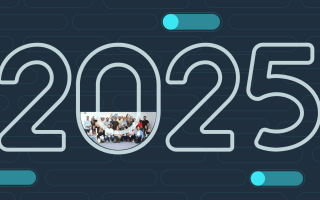
Liveness Detection and its role in preventing Identity Theft

Technology’s rapid development has brought many benefits to companies and daily operations. However, as digital platforms evolve, fraudulent activities have become even more common and increasingly sophisticated.
Recent data shows that the average cost of a data breach worldwide reached a high of 4.45 million dollars in 2023. With the rise of Artificial Intelligence, cybercriminals are gradually exploring new alternatives to commit these crimes.
So, how can we feel safe using more of those developments and, at the same time, avoid falling victim to fraudulent actions? In this article, you can explore how liveness detection helps prevent identity theft and fraudulent activities.
Understanding Liveness Detection
Liveness detection is the process in which verifications are performed by automated systems that use Machine Learning (ML) and Artificial Intelligence (AI) to identify whether the person in a photo or video is real and alive. In other words, it allows the remote verification of a user’s identity in real-time. This mechanism is very helpful to ensure the security of online transactions and identity verification processes.
Users are prompted to use their device’s camera to capture a video or image of their face. The system then analyses the captured image or video to identify key facial features and compare them with stored data.
Liveness detection systems may also observe the user’s behaviour, such as blinking, head movements, or pupil dilation, to assess whether they are a real, live person. Patterns such as changes in facial expressions or subtle movements are also taken into account to indicate whether the person is alive.
Once the date is analysed it is compared against predefined patterns. If the system verifies that the user is alive, it confirms their identity and allows them to proceed with the process. If it detects signs of spoofing or fraud, it rejects the interaction.
The Role of Machine Learning and Biometrics in Liveness Detection
Machine Learning and biometric authentication are essential for liveness detection. ML enables adaptive models to learn from new data, continuously improving its ability to detect fraud threats. In biometric authentication, ML algorithms analyse behaviour patterns to distinguish between genuine and fraudulent interactions. Combining these technologies with liveness detection, it is possible to enhance security even further.
How Liveness Detection prevents Identity Theft
Liveness detection plays a key role in preventing many forms of fraud, including identity theft. By analysing facial features, behaviour patterns and biometric data, it reliably verifies the user’s identity. This helps prevent unauthorised access and fraudulent activities.
In the financial sector, it plays a crucial role in securing online transactions. One of the most common cases that liveness detection can help prevent is when fraudsters try to use stolen information to request loans or credit cards, and even to open a digital bank account.
Many mobile banking apps use liveness detection to verify users’ identities before granting access to sensitive account information. Online payments and account verification processes also benefit from this technology, ensuring only authorised individuals can initiate these types of transactions.
The ability to perform liveness checks in real-time is essential for secure online operations. This ensures that the user’s identity is verified immediately before sensitive information is accessed or shared, significantly reducing the risk of fraud.
LOQR’s Liveness Detection solution
As mentioned before, liveness detection is a powerful tool in preventing fraudulent actions such as identity theft, as it plays a crucial role in securing users’ identities in any type of financial transaction. By integrating this verification step in daily financial operations, organisations can ensure the safety of their transactions and their customers’ identities.
However, implementing this type of verification step must be carried out with caution and always considering the appropriate regulations and compliance requirements. Due to the proliferation of biometric security forgeries through deepfakes and the growing number of bank fraud attempts through spoofing, it is extremely important to increase the security and effectiveness of these systems to detect fraud. This is where LOQR is the ideal partner to safeguard the security of financial institutions’ customer identity verification operations, providing the tools to create a secure and personalised experience, fostering reliable relationships, and driving growth.
At LOQR, we understand the importance of providing secure and compliant digital solutions to our clients. Through our Platform, we ensure that every identity verification interaction and transaction is conducted with the highest level of security and compliance. We provide an Automated Perpetual KYC (pKYC) solution to guarantee the integrity and accuracy of customers’ personal data. Using advanced biometric face recognition and liveness detection, we certify that only the rightful owner can update their personal information.
Contact our team today to learn more about how LOQR is committed to providing users with secure and trustworthy digital journeys and transforming complex processes into multiple simple solutions.

